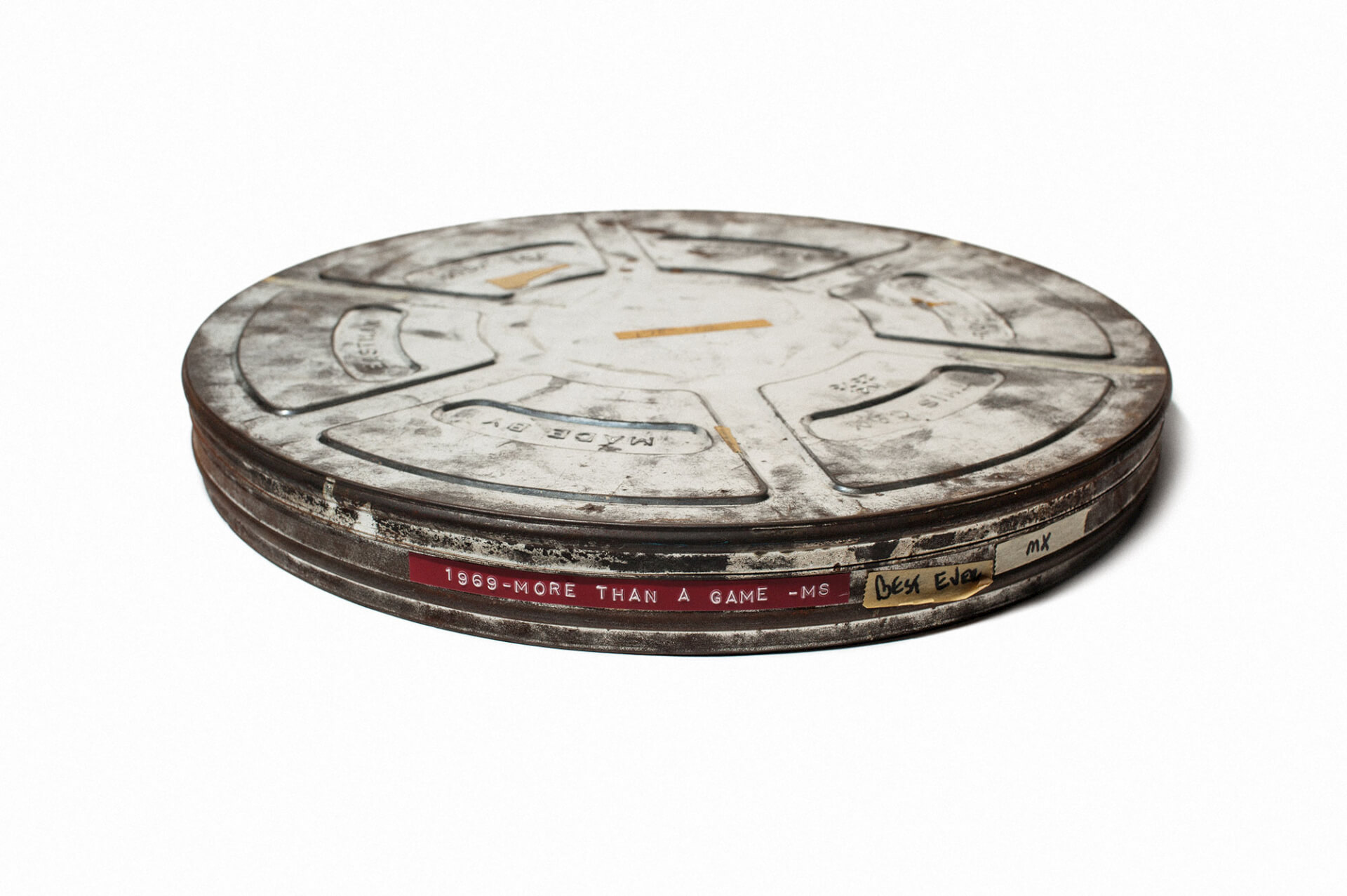
1 / 23
Ken Rodgers: “This was a film about players describing how much the NFL meant to them, that it was a way of life, a calling, if you will, and more than a sport. And I've always felt that it’s also a great description of how NFL Films looks at the NFL. To us, it’s mythology. Even the titles of our films reflect that. This was a way to look at life, what it means to be a competitor, what it means to be an American.”
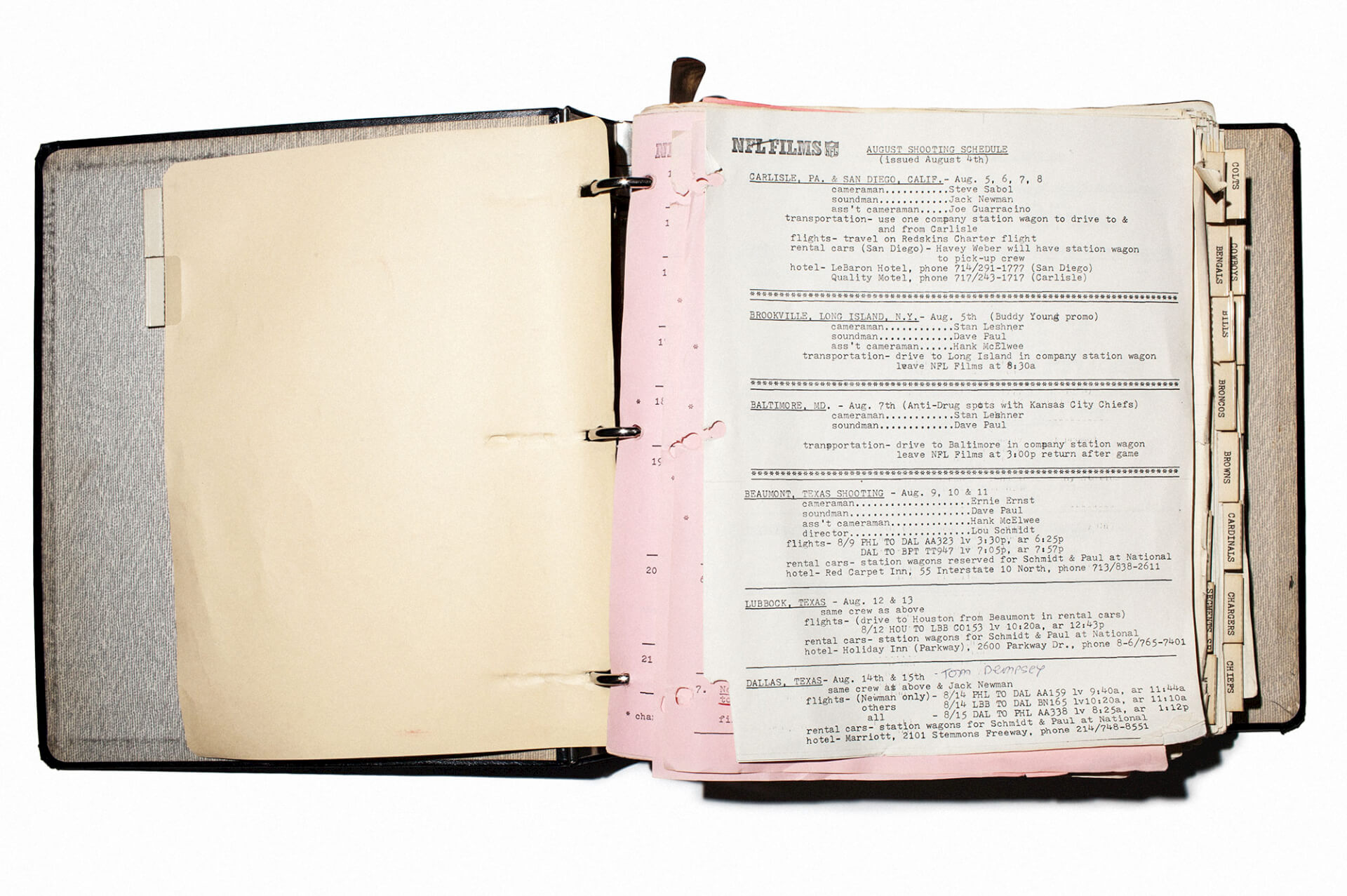
2 / 23
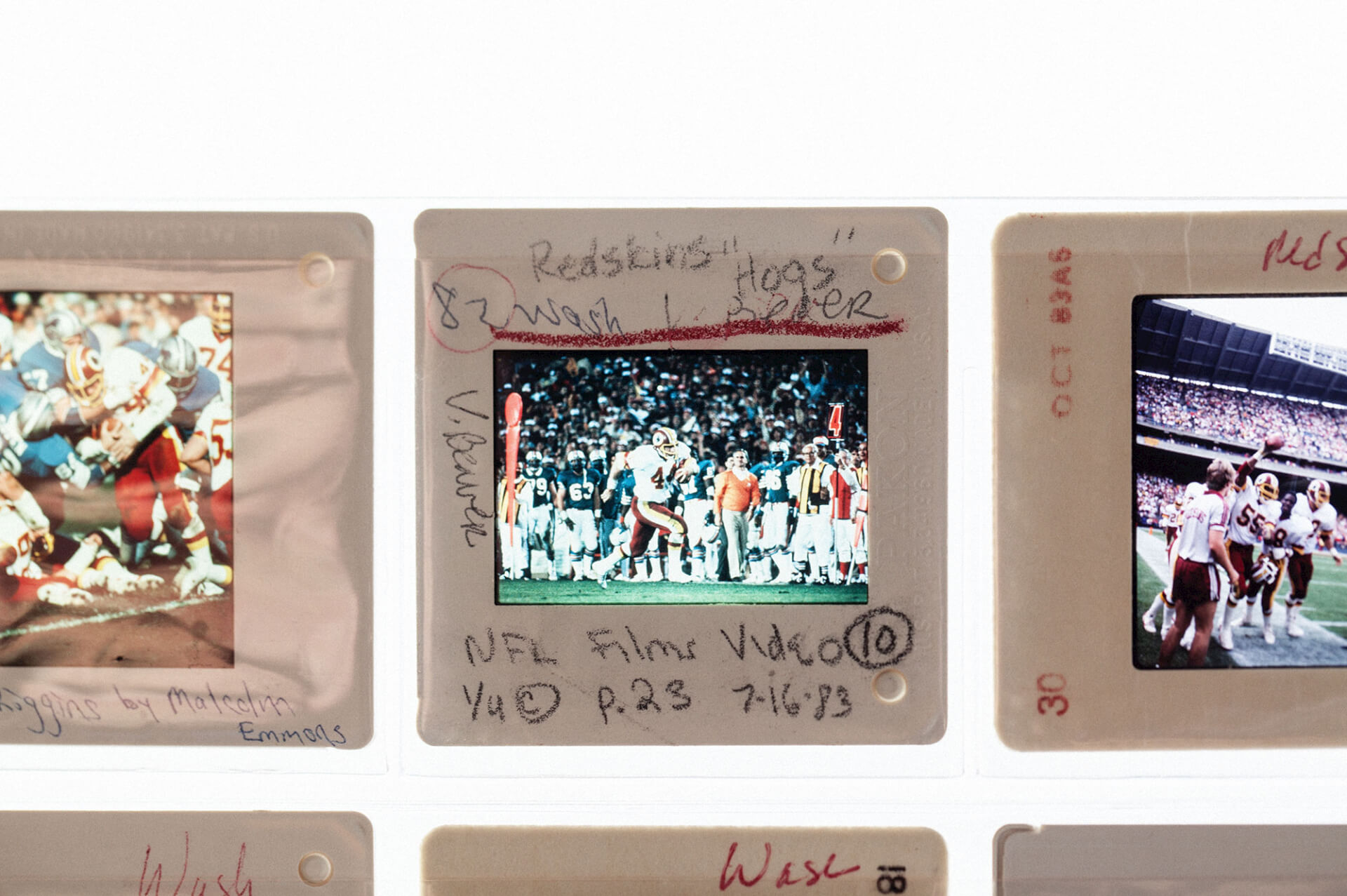
3 / 23
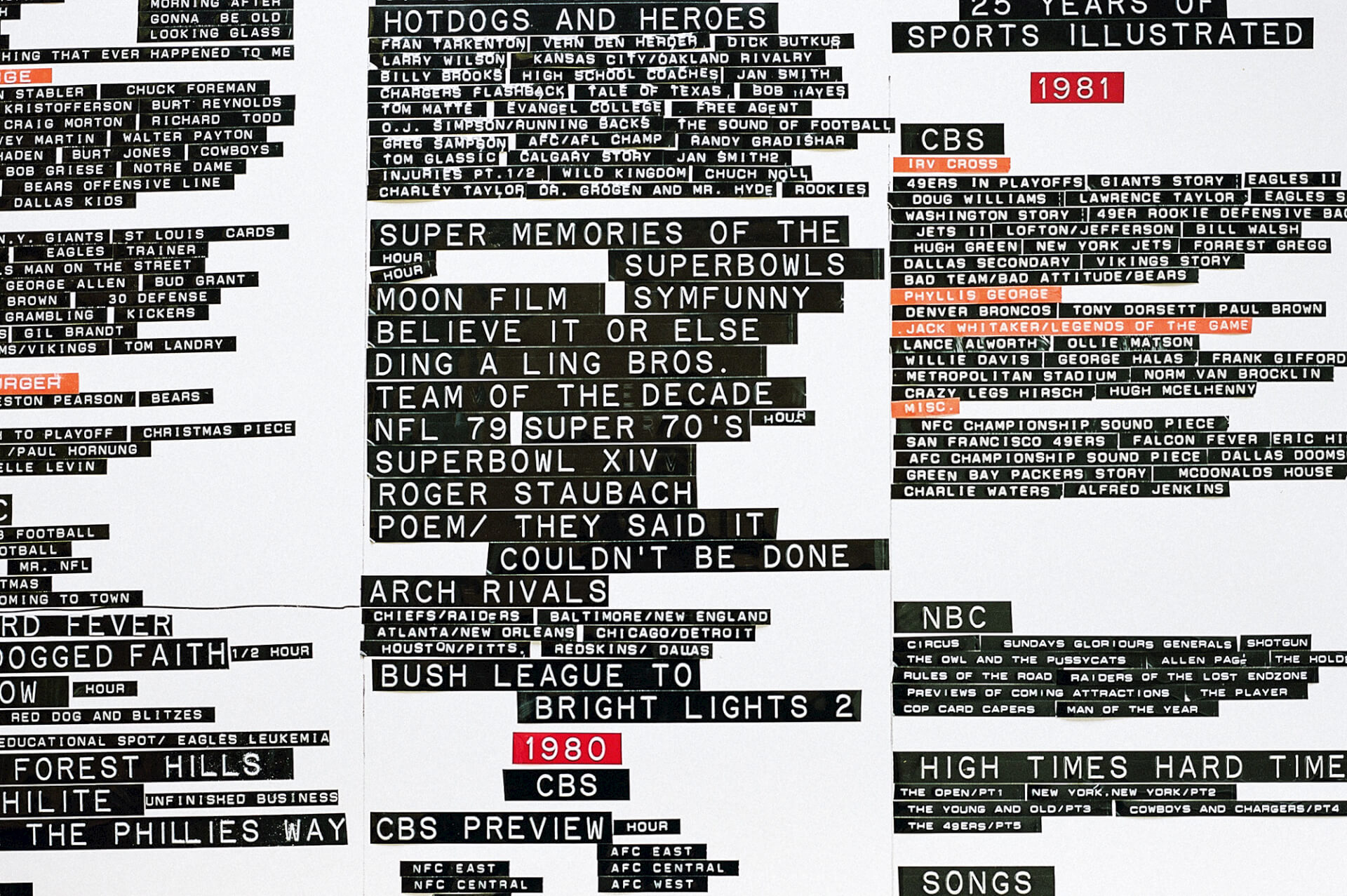
4 / 23
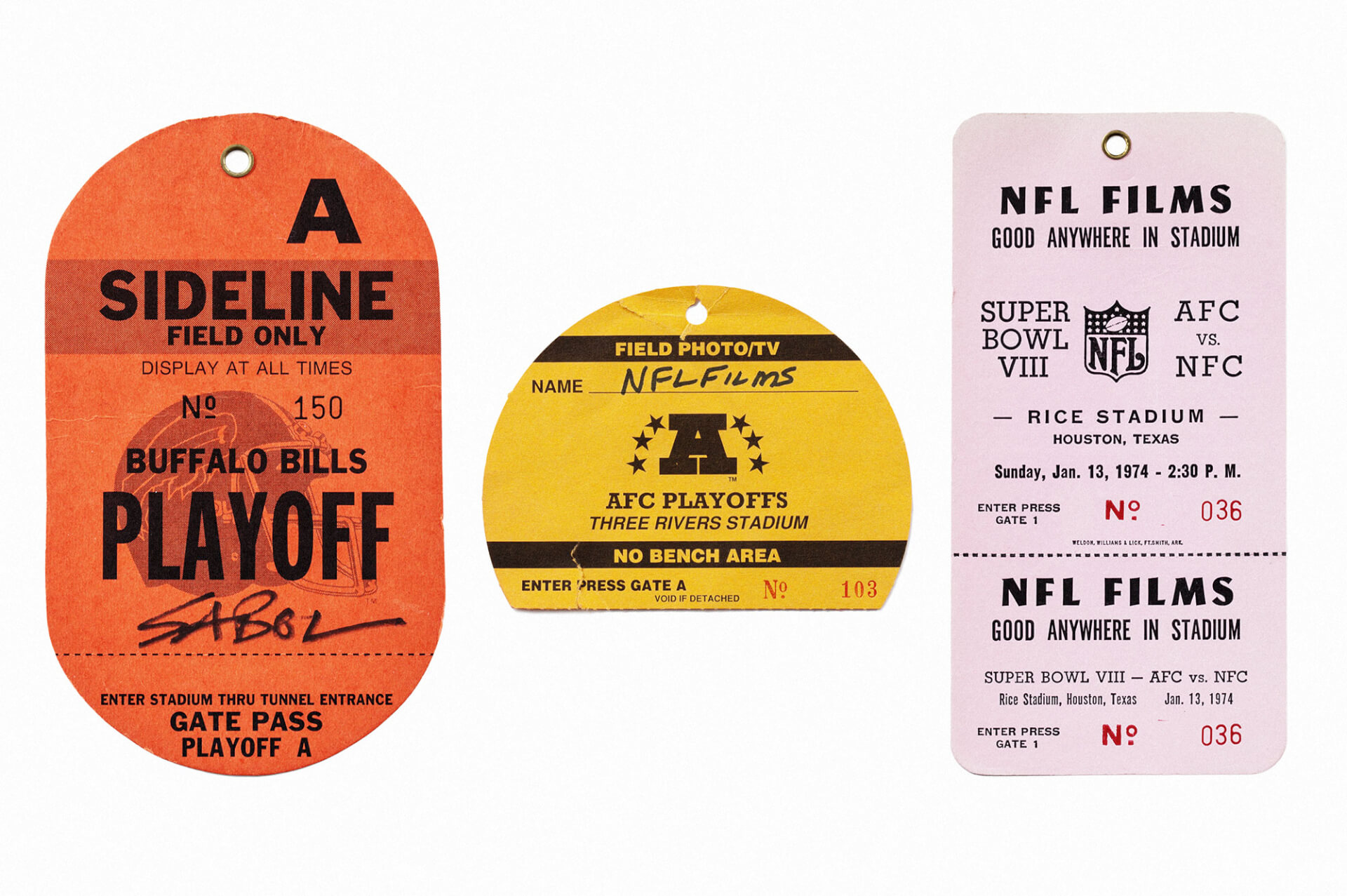
5 / 23
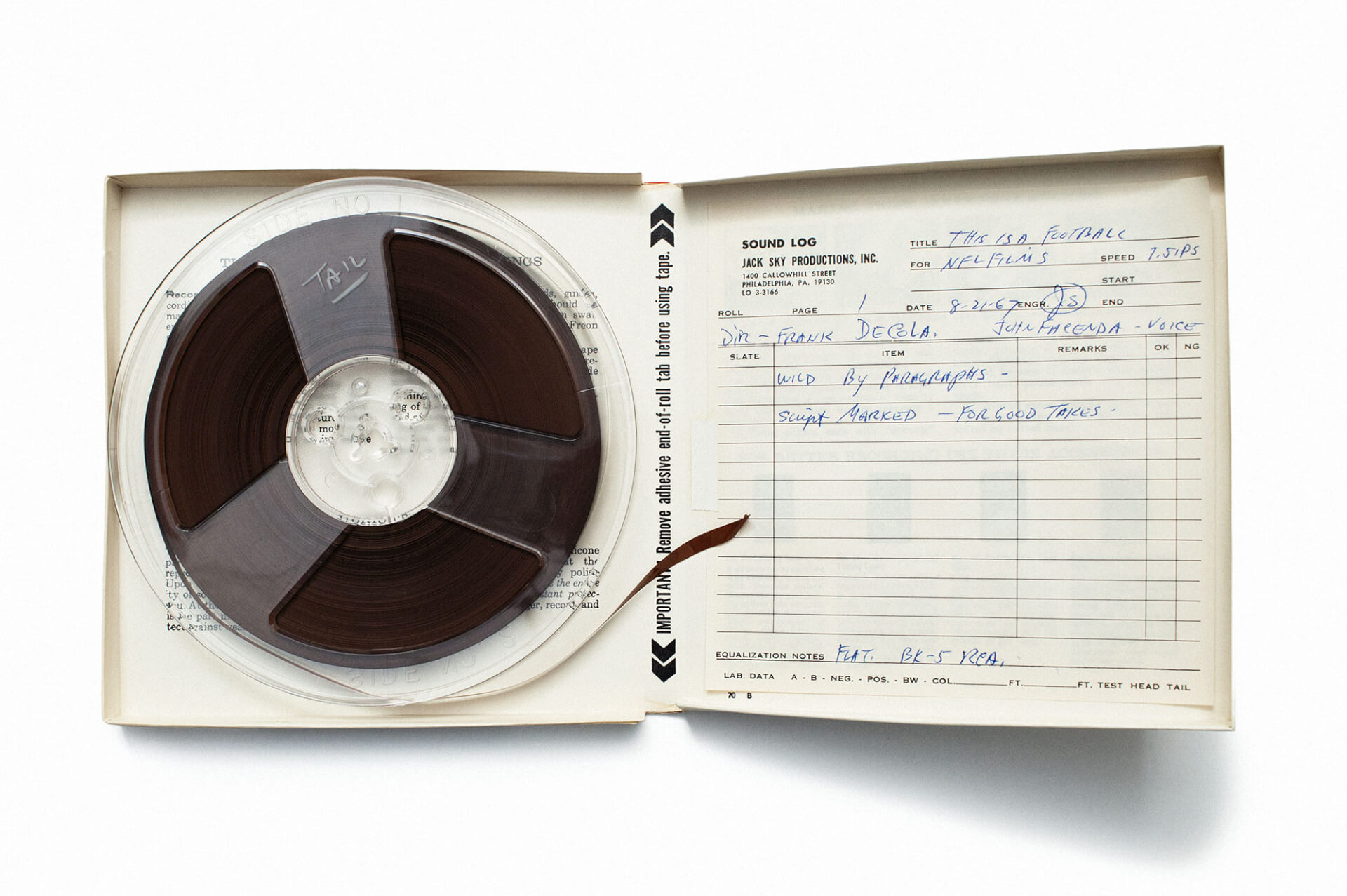
6 / 23
“This sound tape is a recording of John Facenda doing voice-over for a piece called ‘This Is a Football.’ John Facenda is ‘the voice of God.’ The first thing that people think of when they think of NFL Films is probably John Facenda. He started with us in 1965 and worked up to his death in '84.”
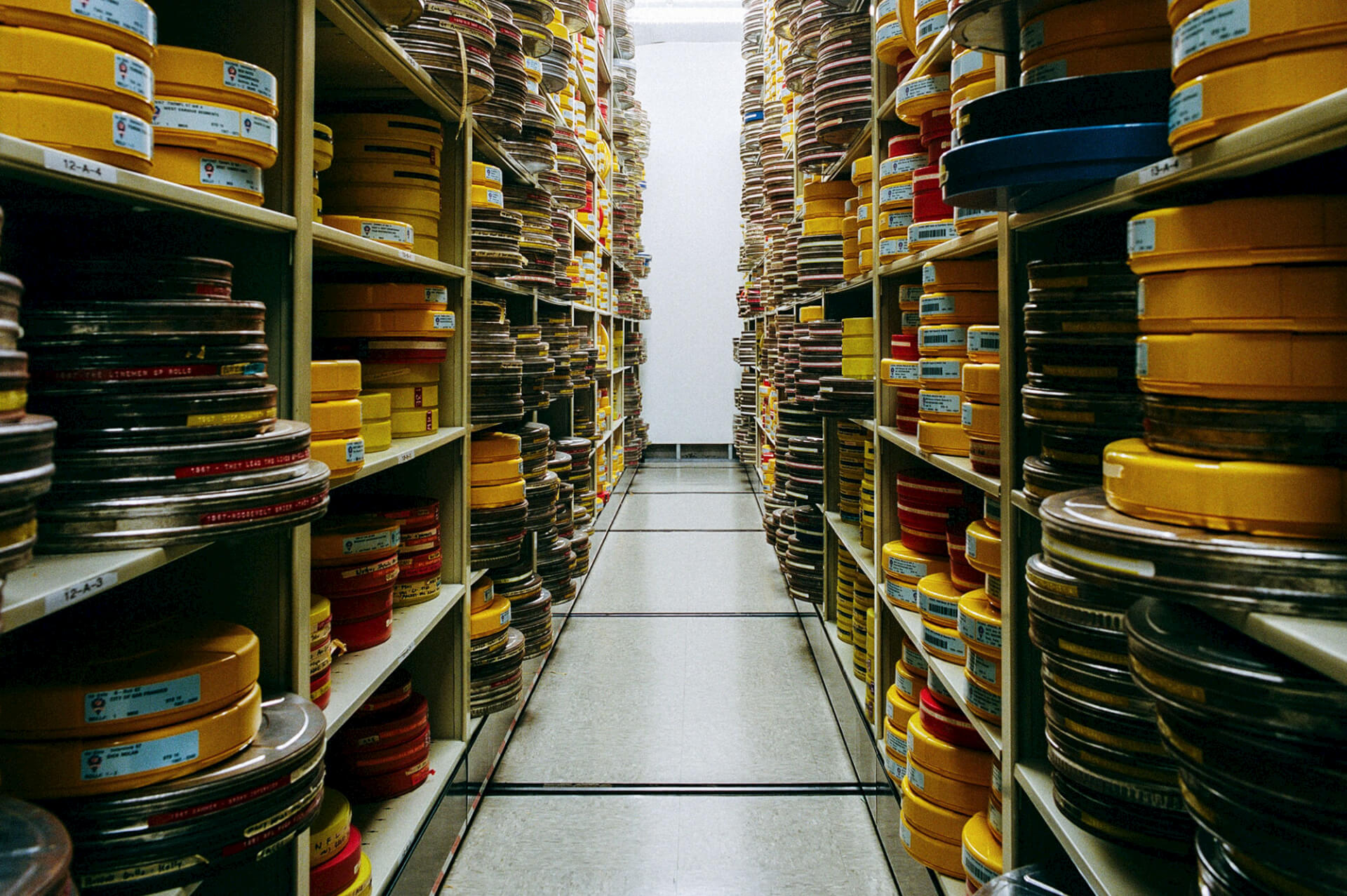
7 / 23
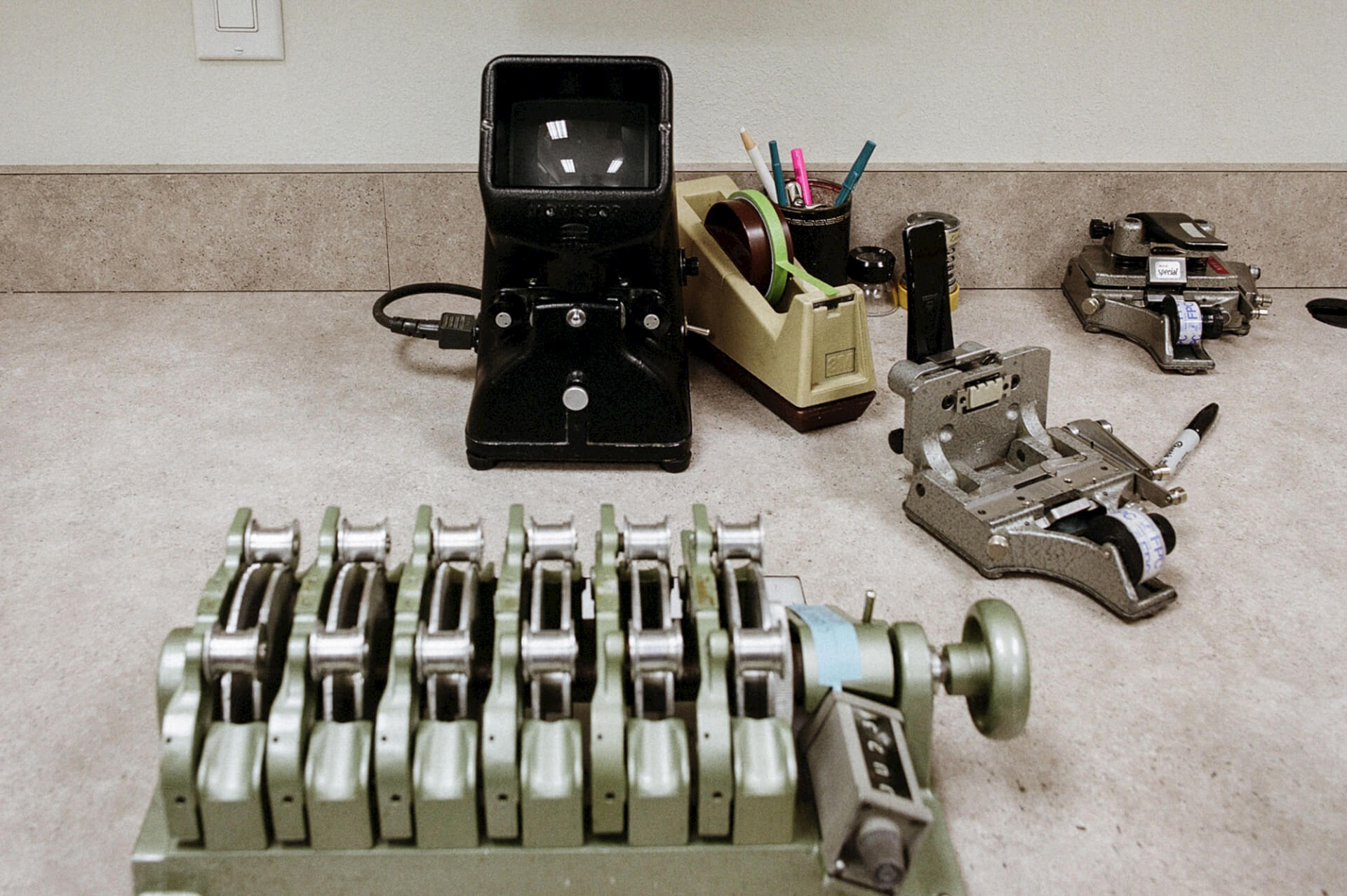
8 / 23
“Before we stopped shooting 16 millimeter, we shot 1,000 miles of film per season, and our library has over one million feet of football action. We have over 50,000 cans of film in our vault. For instance, we have the first football game ever filmed on camera, in 1894 by Thomas Edison: Princeton vs. Rutgers. Because of NFL Films, professional football is the second most documented human endeavor on 16-millimeter film next to World War II.”
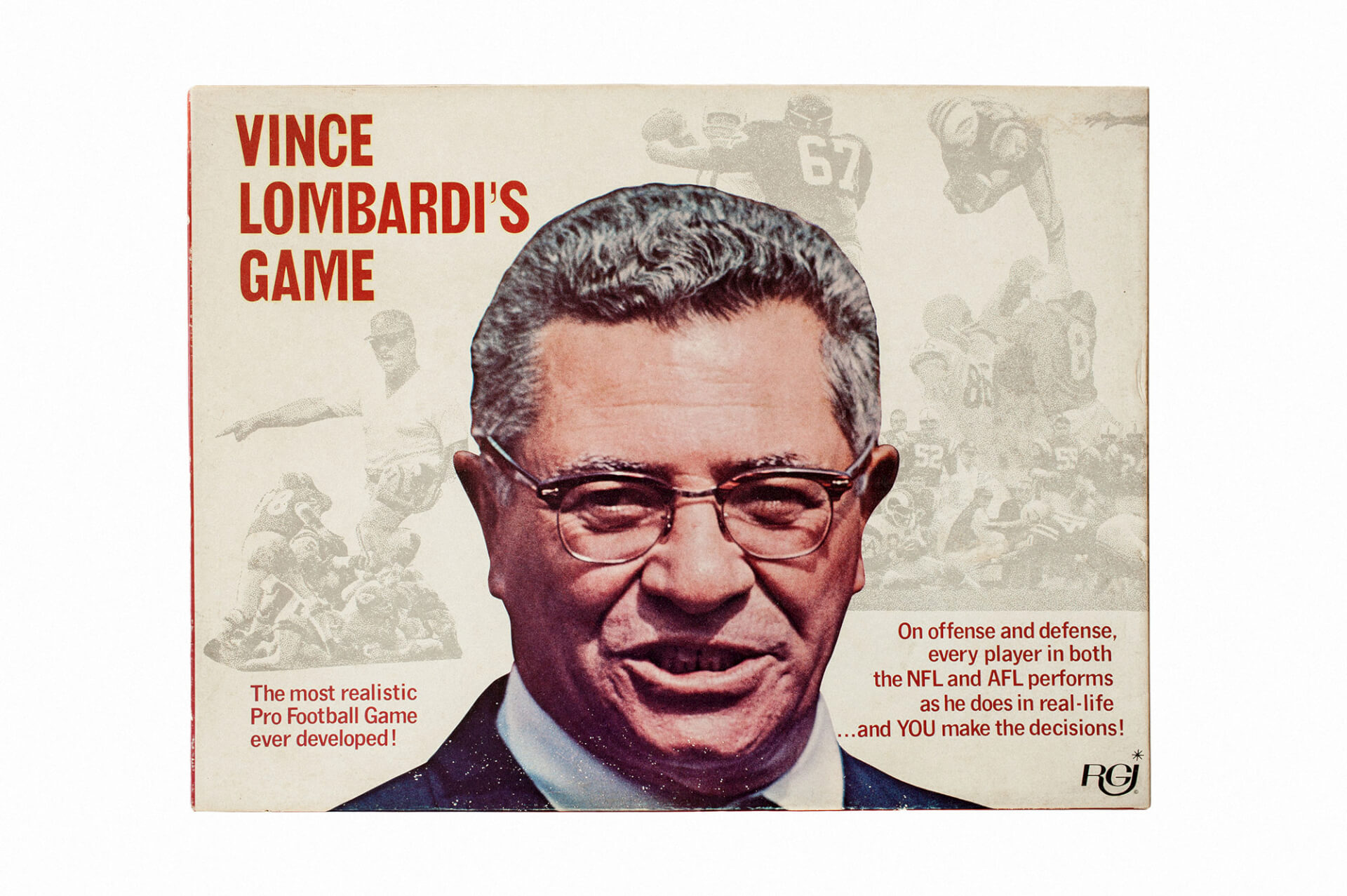
9 / 23
“Lombardi was the first great character covered by NFL Films. In the '60s, he was the star. So in many ways, Vince Lombardi is our first subject. ”
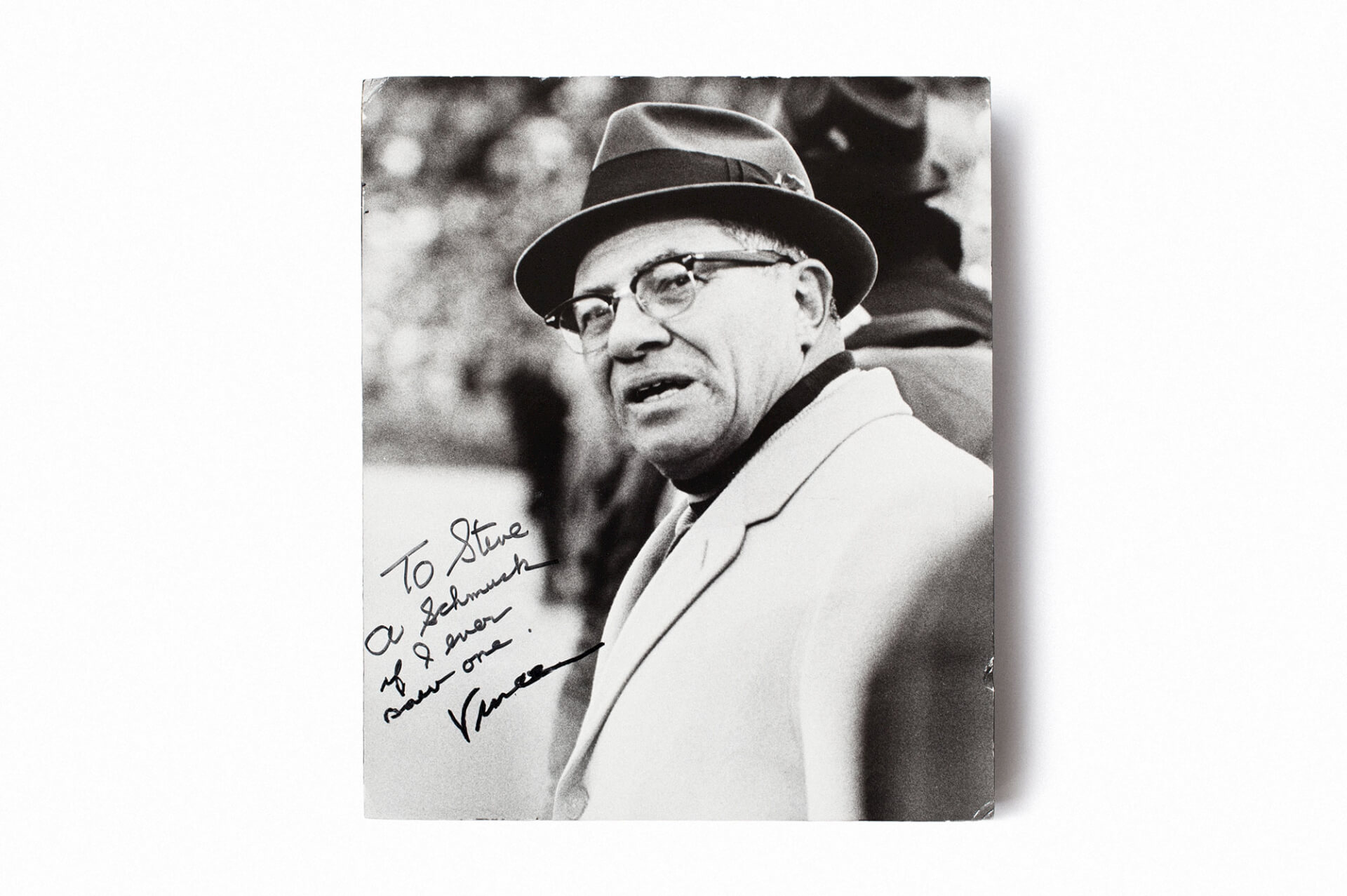
10 / 23
“One of our first long-form documentaries—and one of our most famous—was called ‘Lombardi’; it was an hour long, for CBS in 1967, I believe. Steve and his crew spent most of the season capturing the essence of Vince Lombardi, going to church or lifting weights or having a party in his basement after a victory at Lambeau Field—and, of course, on game day. The autograph was given after the film. Steve always loved that because if you're going to get an autograph from Vince Lombardi, why not have the essence of Vince Lombardi. So that's definitely tongue in cheek and showed their closeness.”
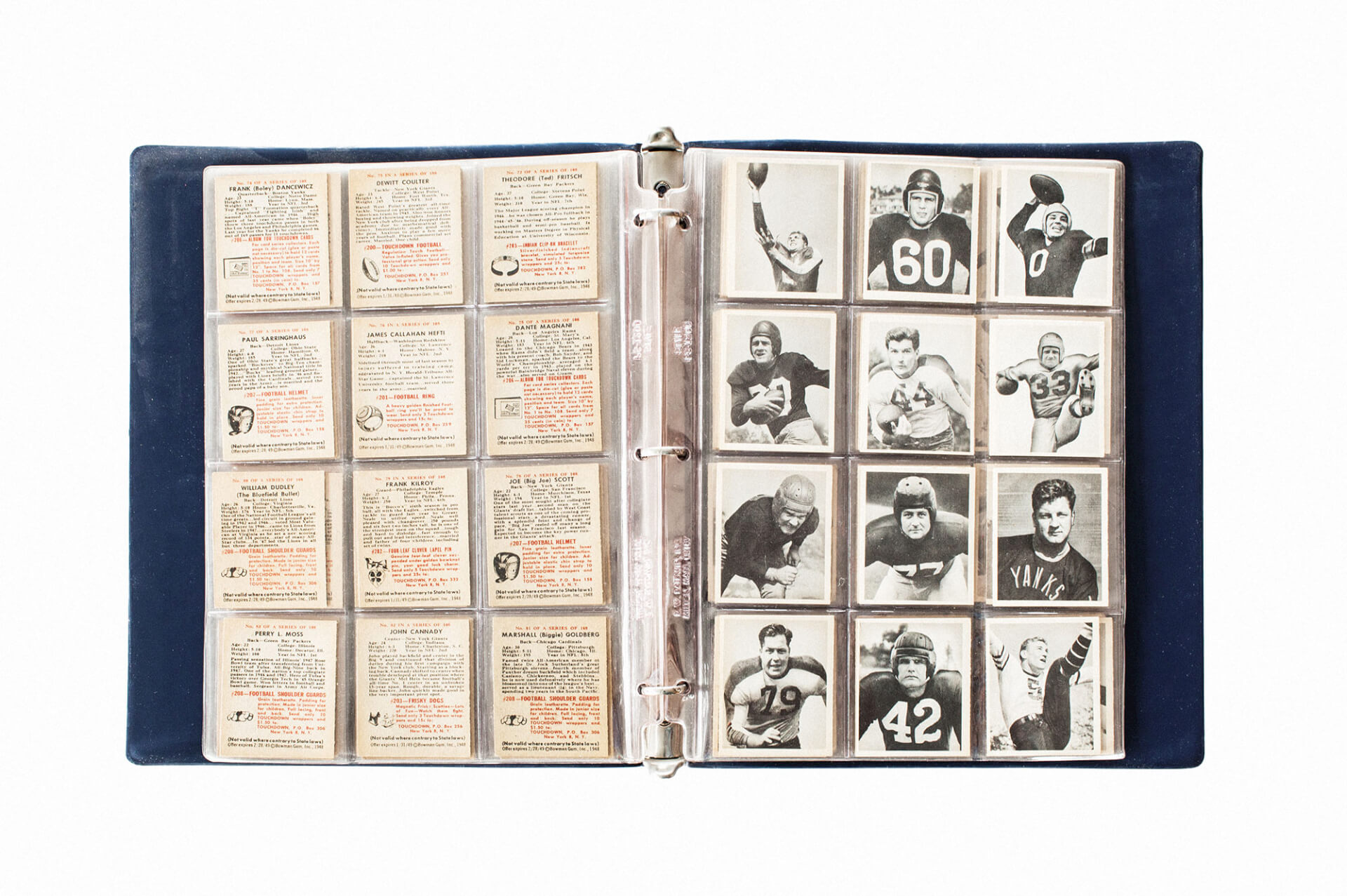
11 / 23
“To tell the story of the present, you have to know the past. These cards are what's left of these guys when it comes to recording their game.”
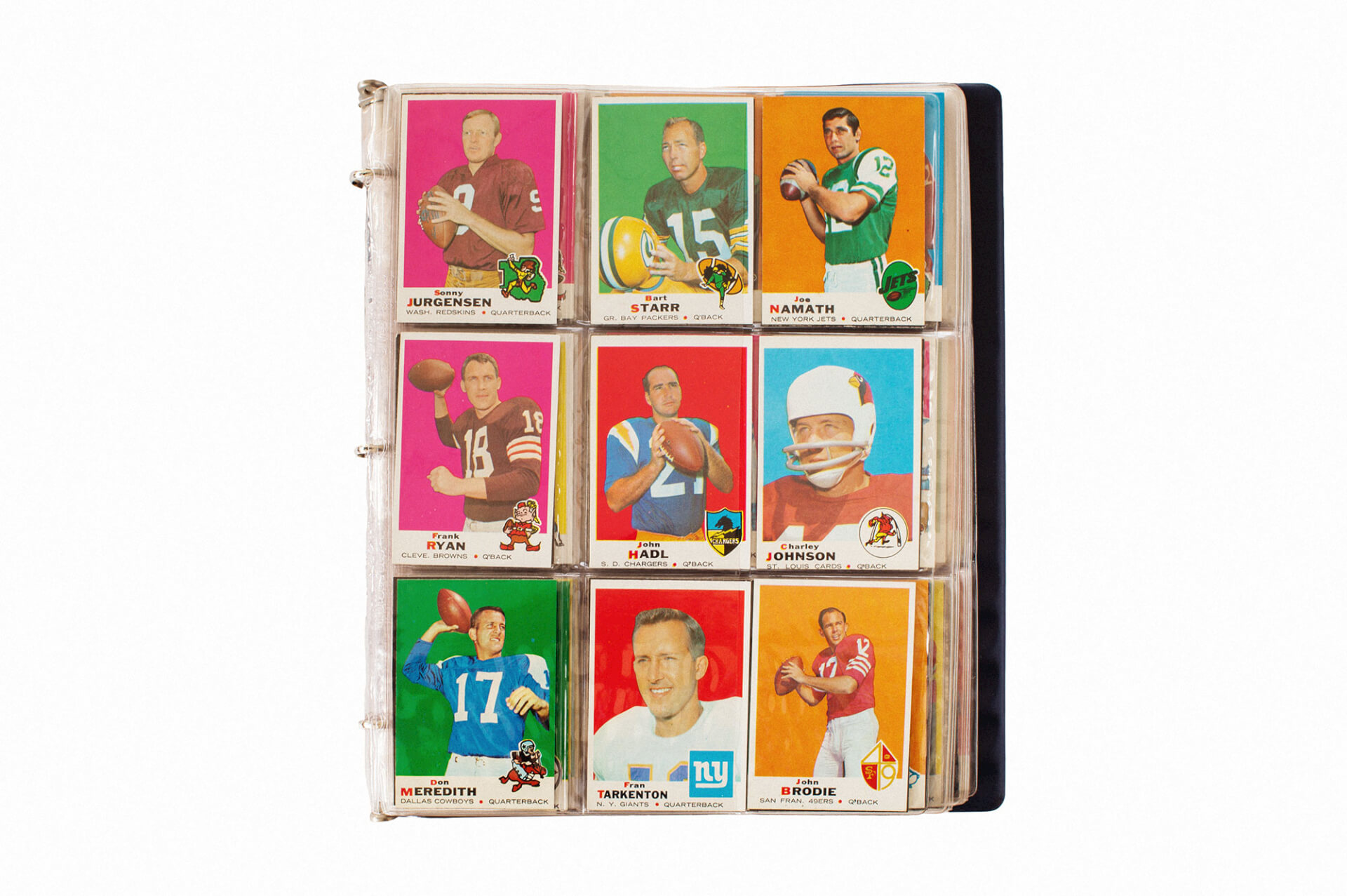
12 / 23
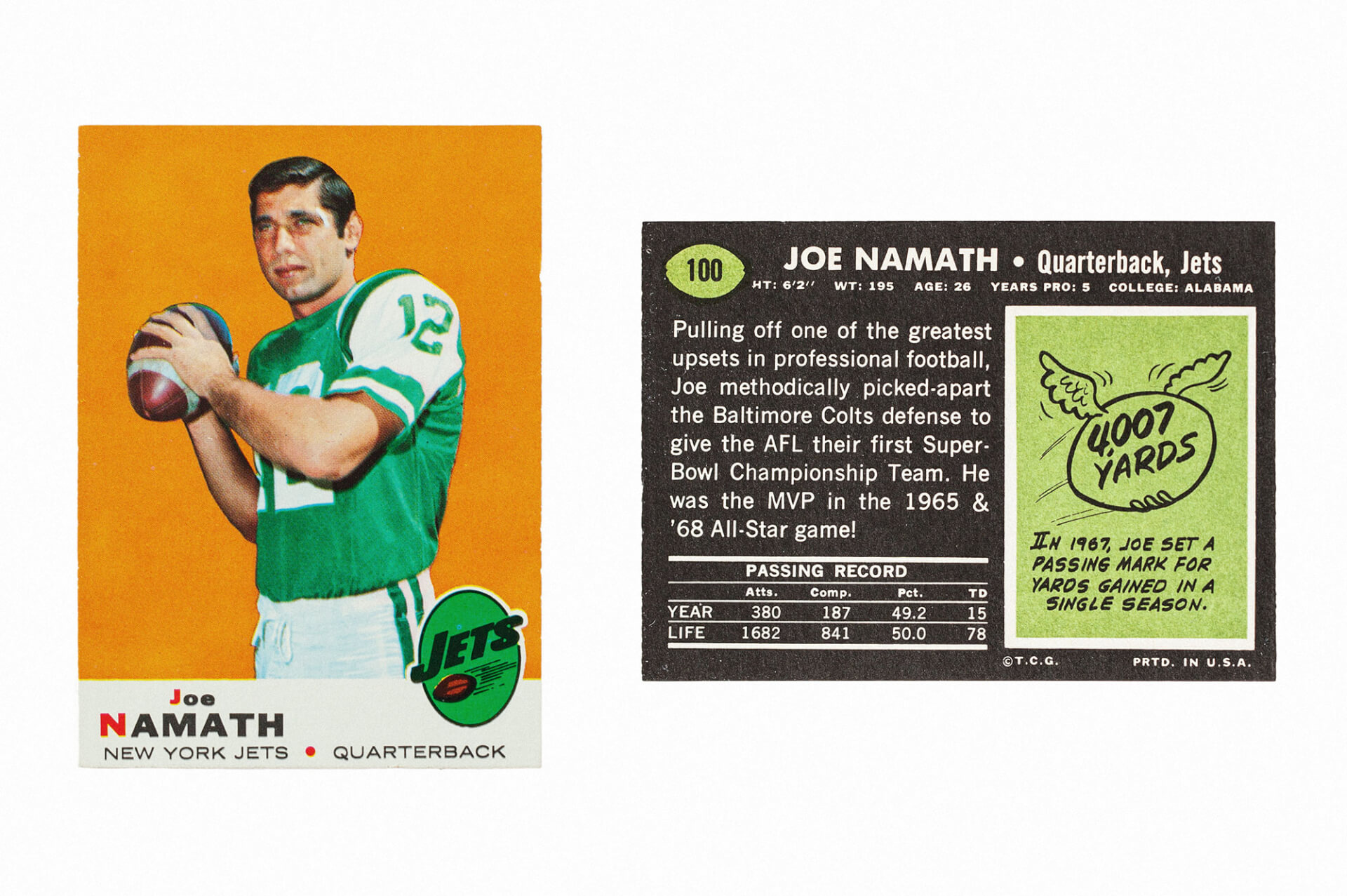
13 / 23
“Namath represented a change in the sport, where the players were becoming as big a story as the game itself—if not bigger. And it just happened to be the same time that NFL Films was coming into its own.”
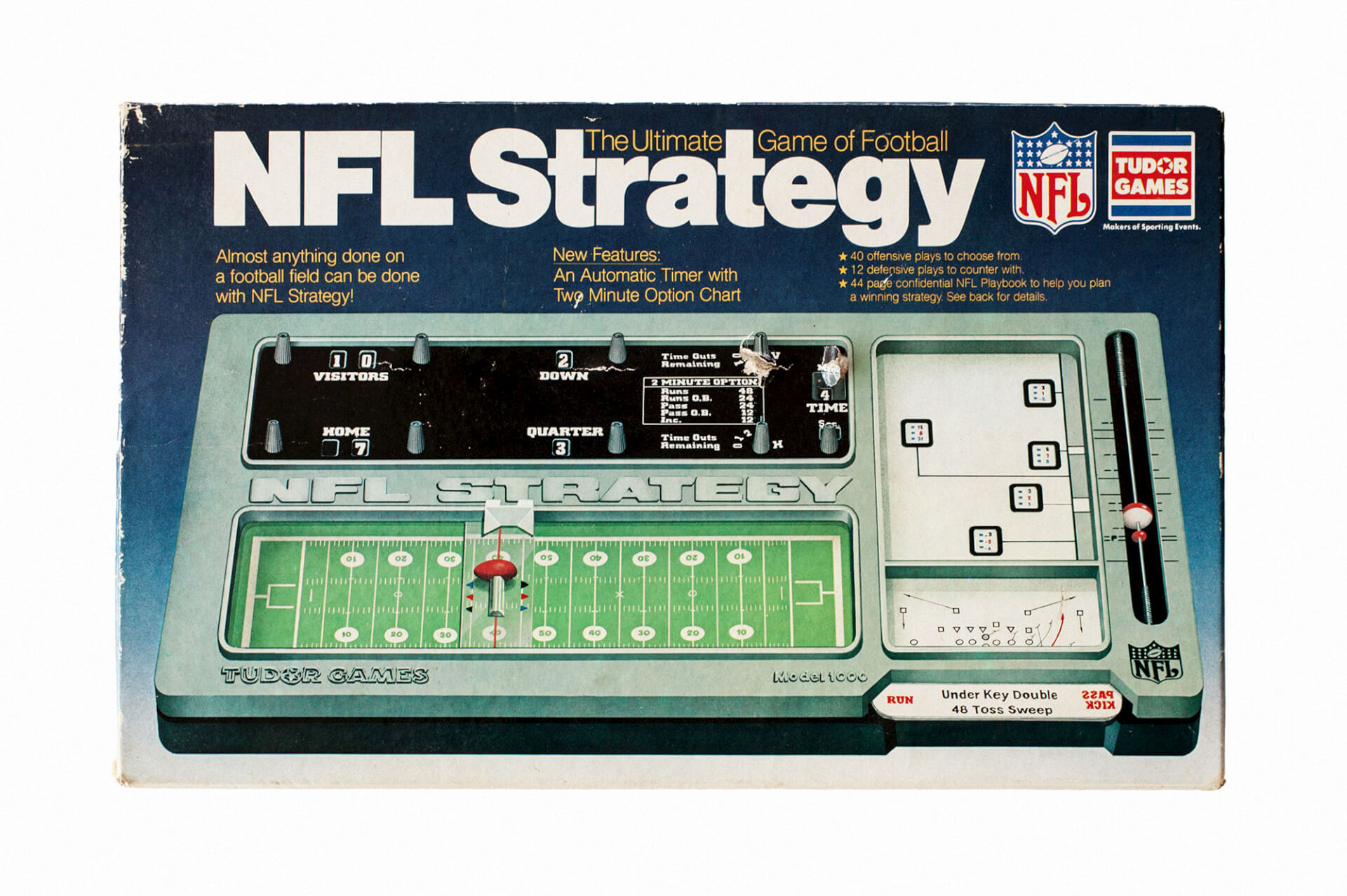
14 / 23
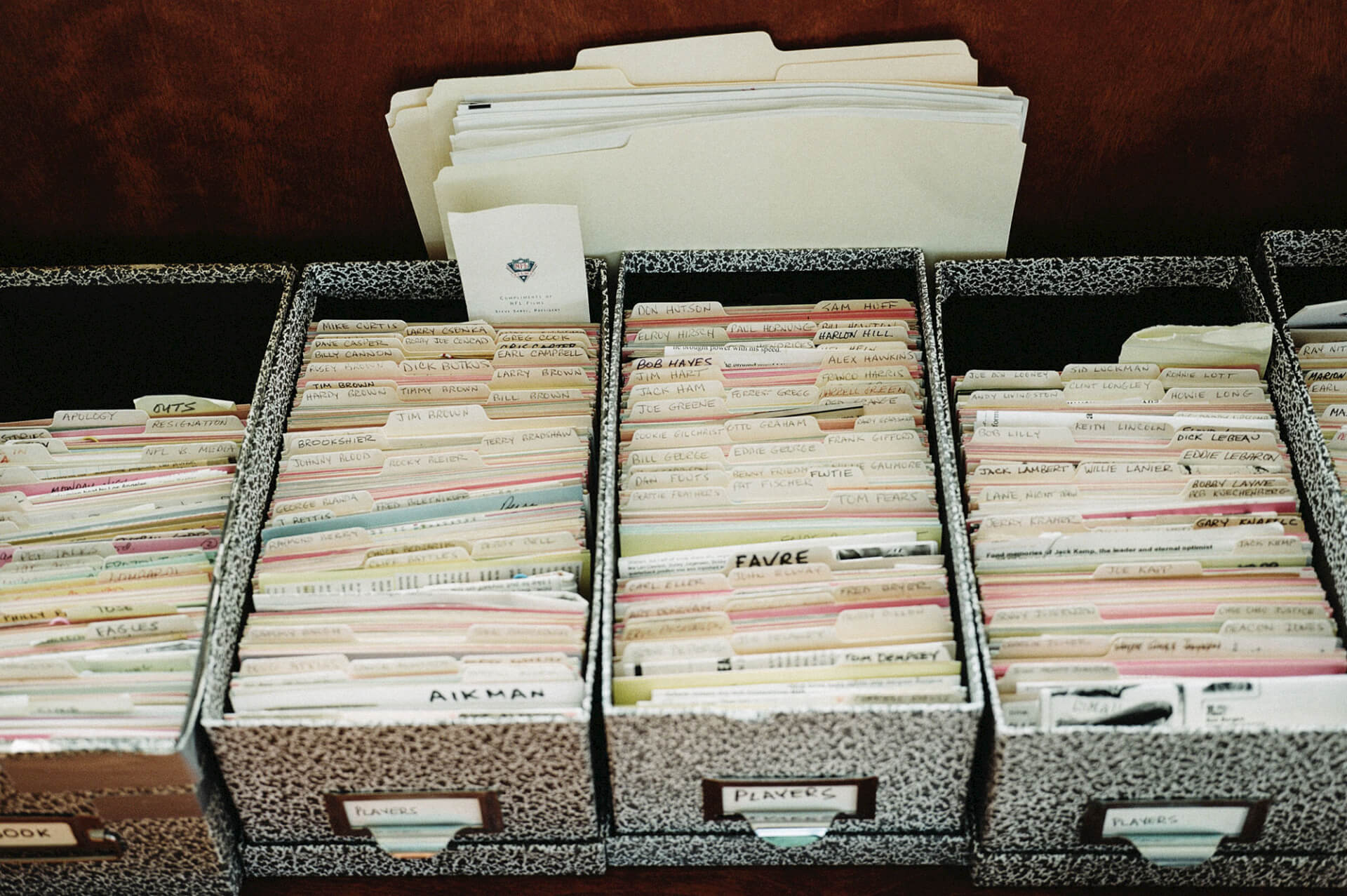
15 / 23
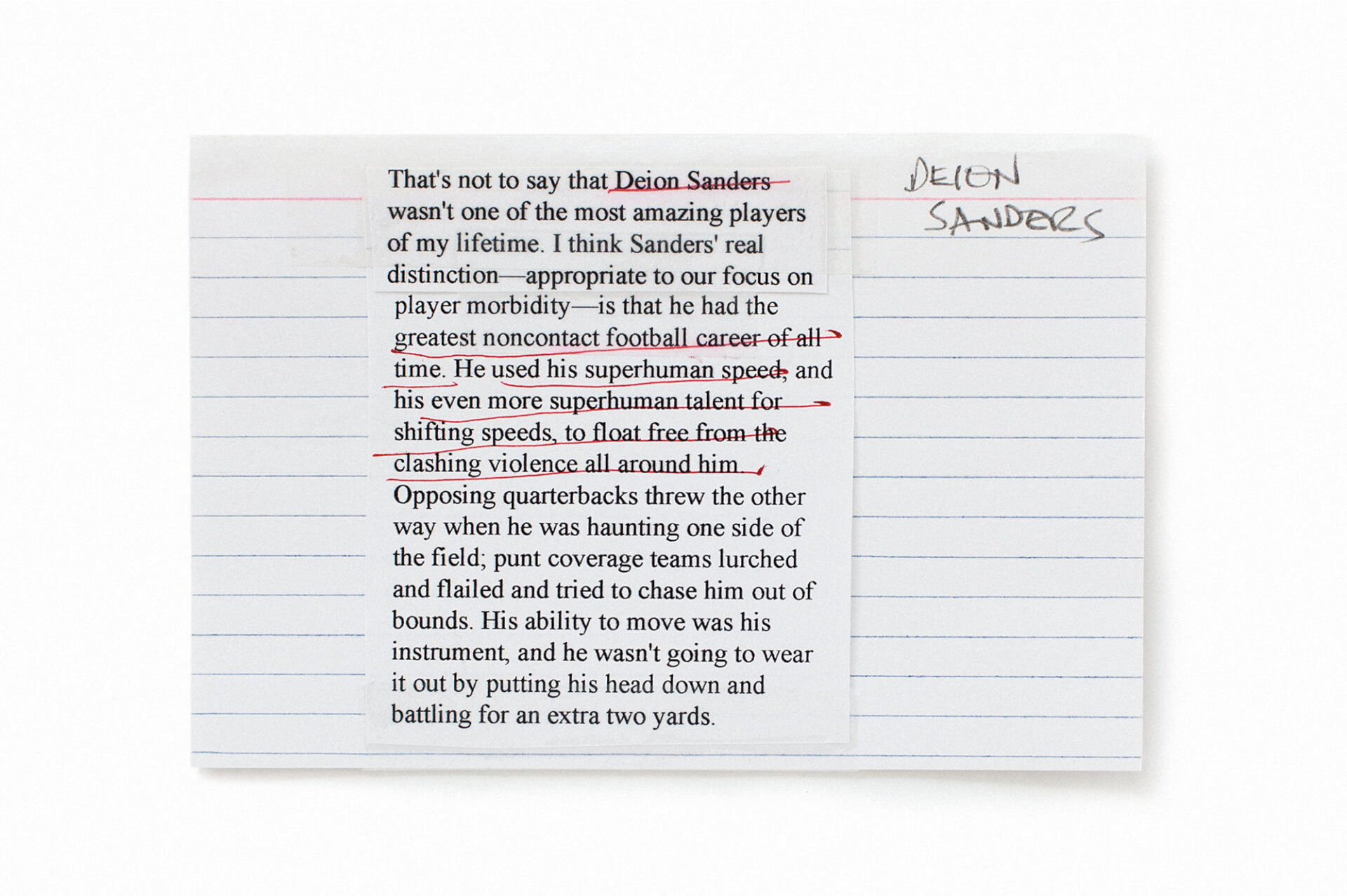
16 / 23
“Whenever Steve read something that he thought was described appropriately, about someone historically in a book, he would photocopy it and put it into a file. He loved just finding great pieces of writing in various newspapers about players and making sure that they were in these files. To this day, his office is filled with boxes of notes on players. And when we produce films on people, it's not enough to look at their stats; I want to know what Steve thought about them as people, as characters, what their essence was. To this day, producers use these cards as a way to understand that romanticism he saw in different players.”
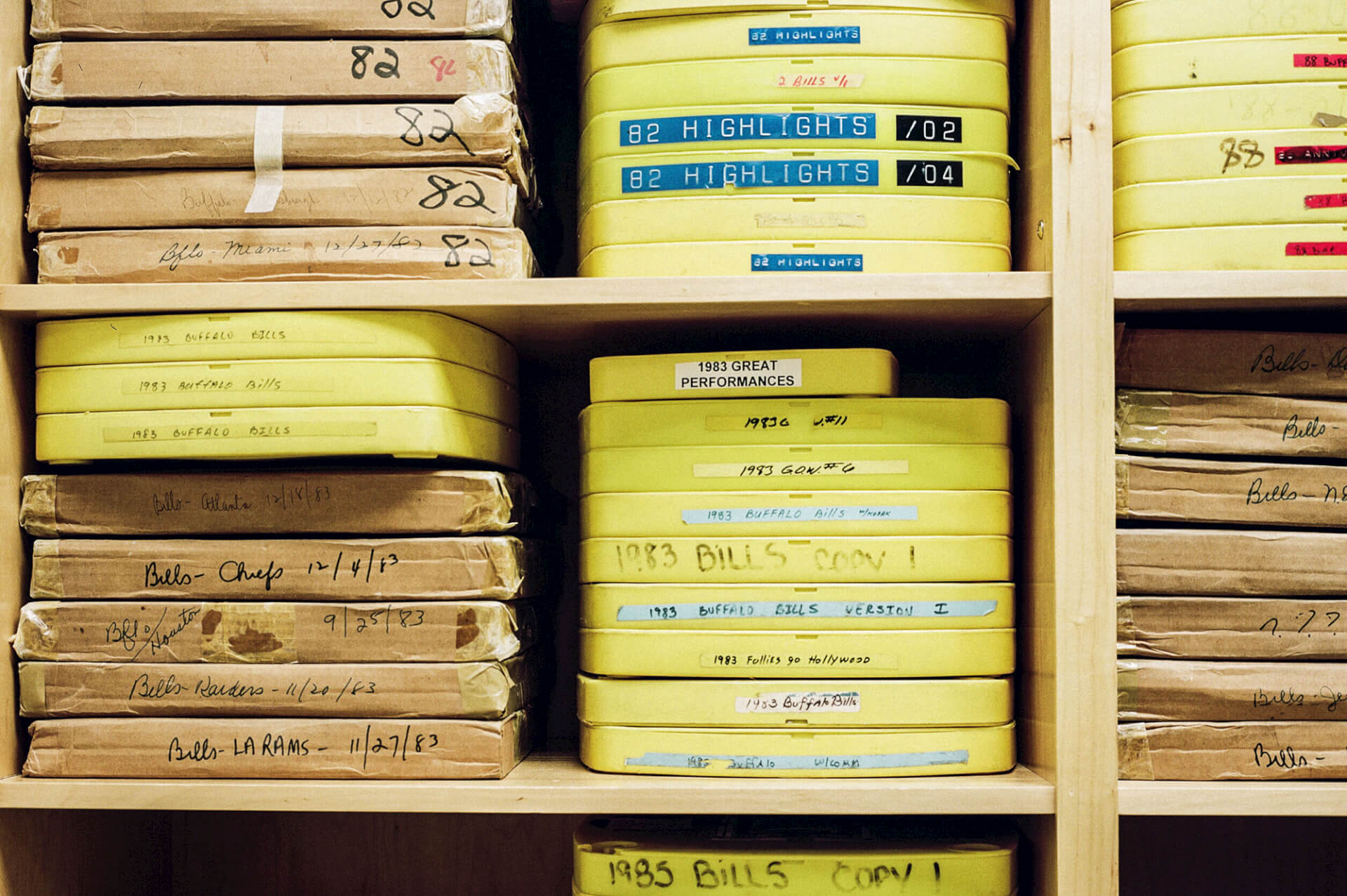
17 / 23
![“[The reel in the top left] is an original recording of Sam Spence orchestral music. After Facenda’s voice, the second thing everyone thinks about when they think about NFL Films is our music. And 'Up She Rises' in particular is one of the more famous songs that people associate with football. It’s so well-known, it’s now used in commercials to sort of parody football.”](https://victoryjournal.com/wp-content/uploads/2016/02/football-files-018-1.jpg)
18 / 23
“[The reel in the top left] is an original recording of Sam Spence orchestral music. After Facenda’s voice, the second thing everyone thinks about when they think about NFL Films is our music. And 'Up She Rises' in particular is one of the more famous songs that people associate with football. It’s so well-known, it’s now used in commercials to sort of parody football.”
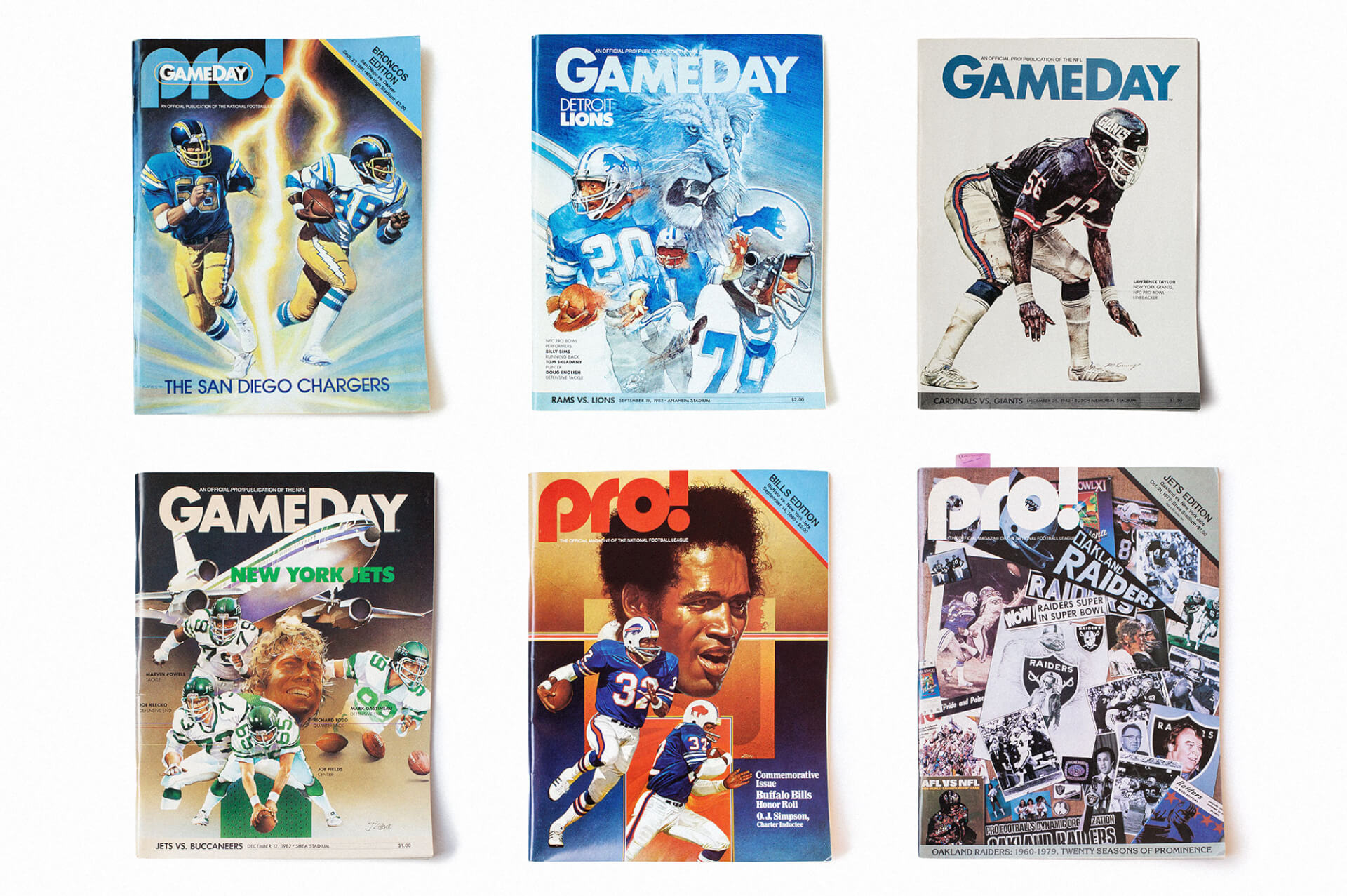
19 / 23
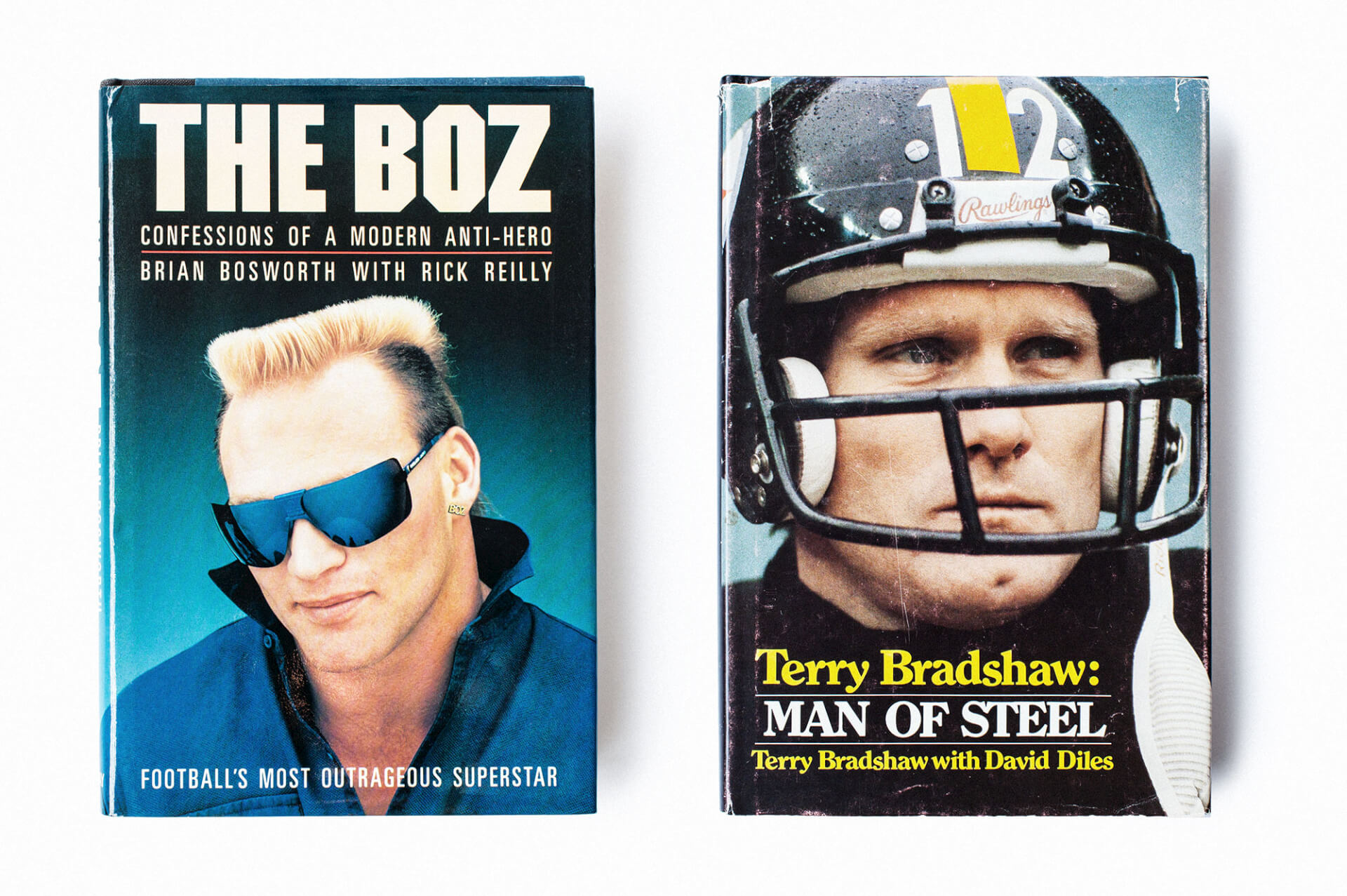
20 / 23

21 / 23
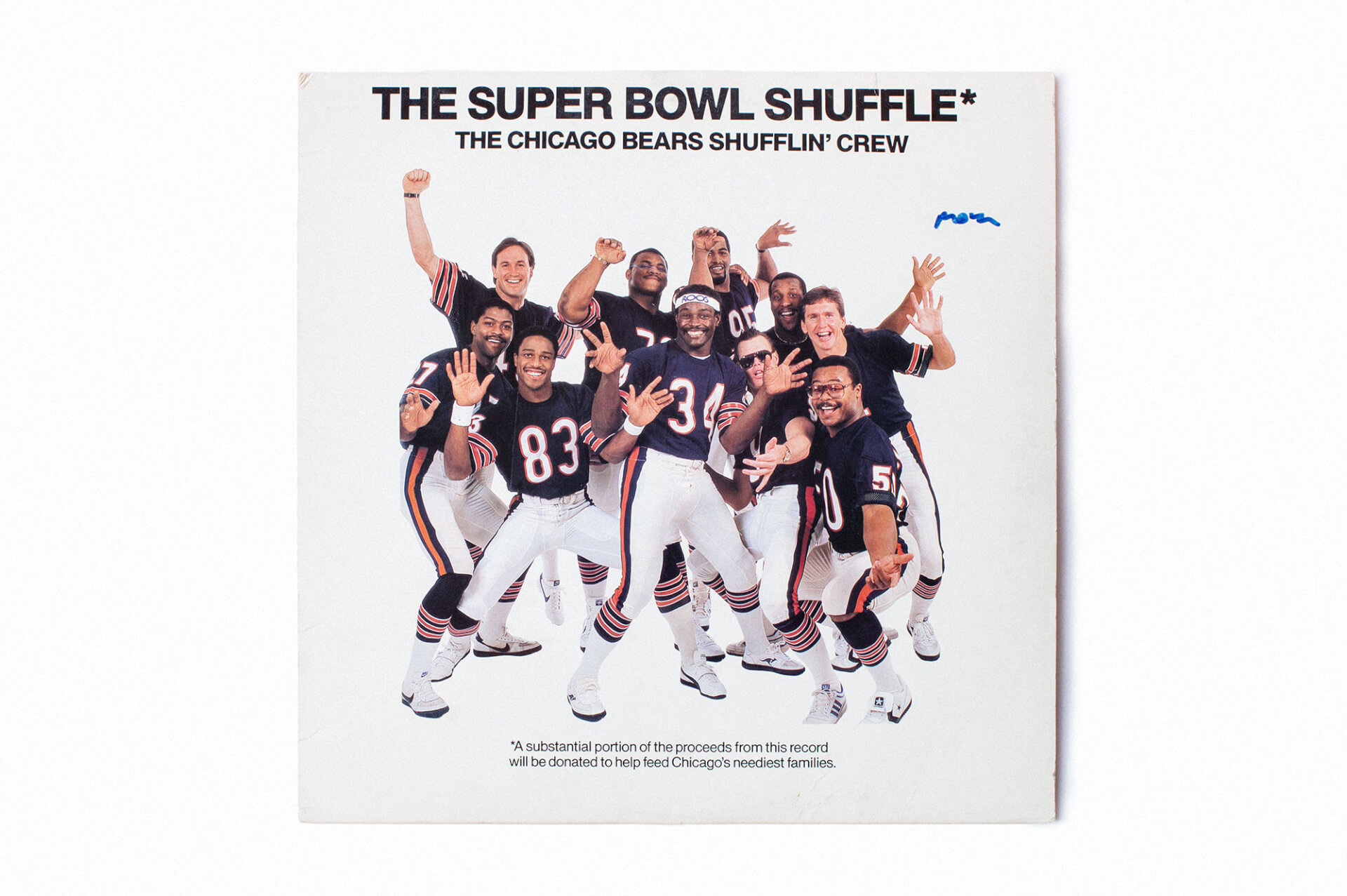
22 / 23
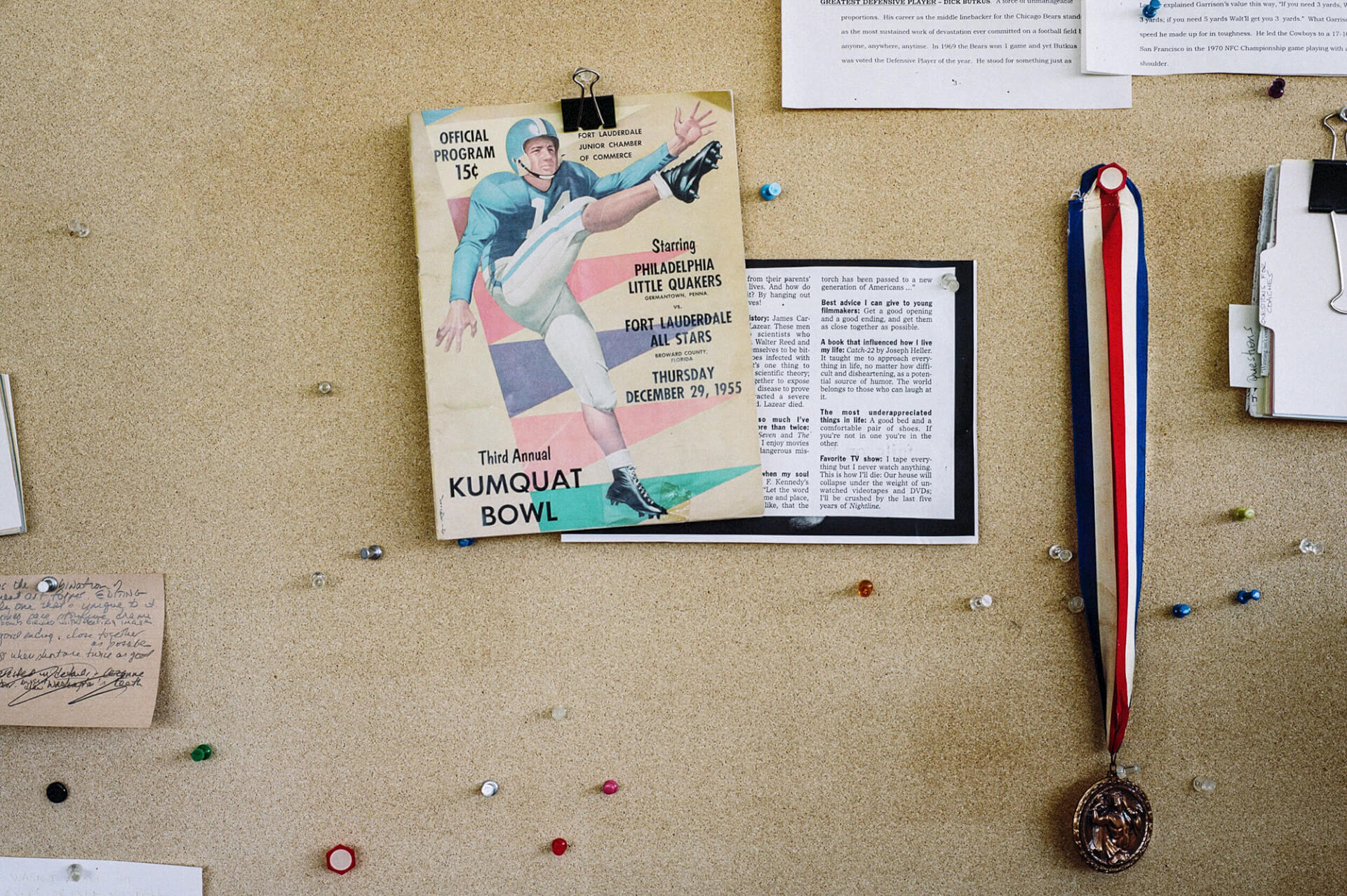
23 / 23
“The Kumquat Bowl was a traveling football game, starring Steve Sabol, a member of the Philadelphia Little Quakers. Steve kept this program and a lot of stuff from his time with the Little Quakers. He was someone who had a deep love for the actual playing of the game. A lot of what he created at NFL Films came from his experiences of actually playing. I think that's why so many football players responded to our work in those early years, because they could sense that whoever was making these films had played.”